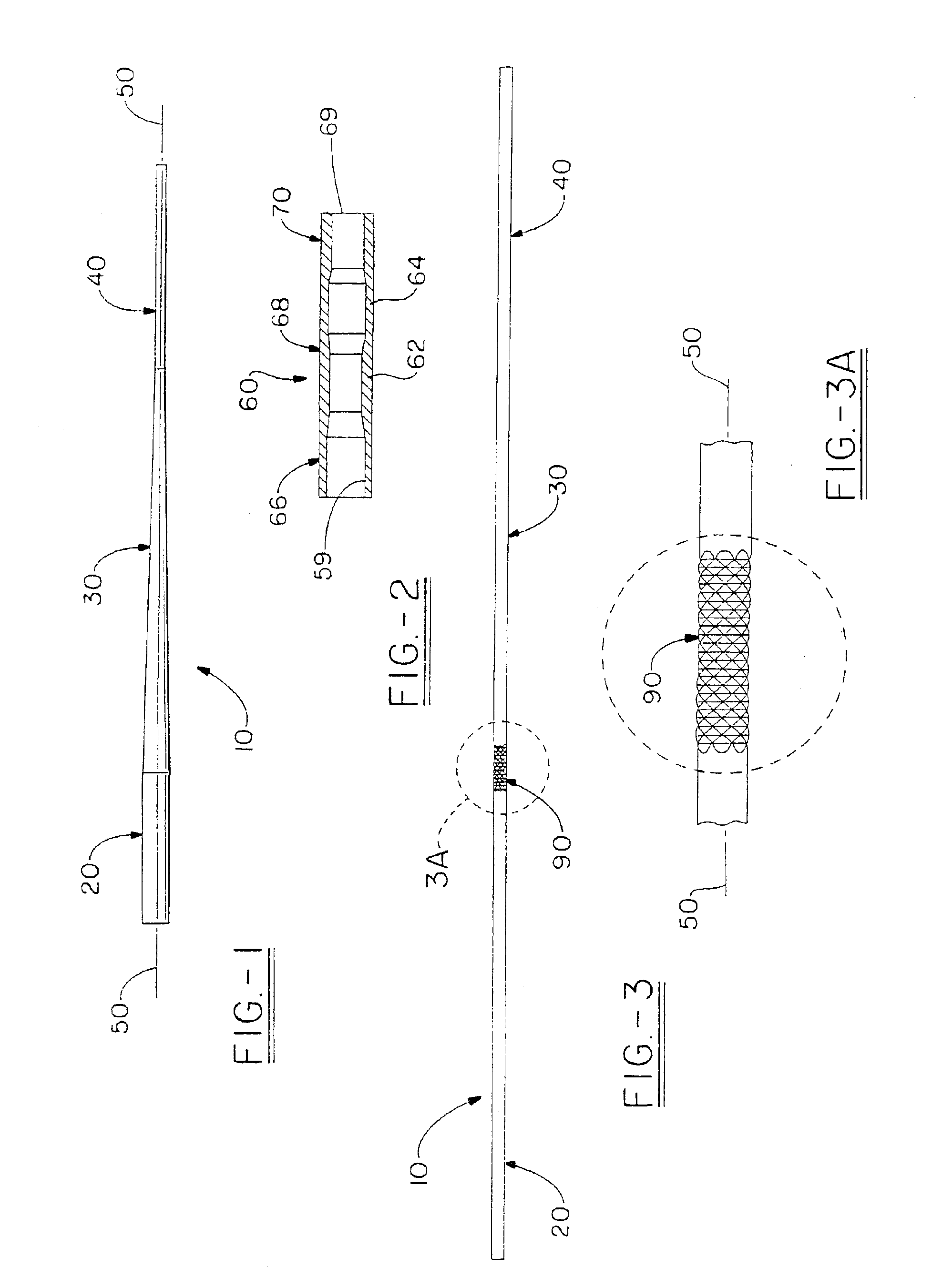Method of preparing hydroformed metallic golf club shafts
a golf club shaft and hydroformed technology, applied in the field of hydroformed metallic golf club shafts, can solve the problems of limited design and functionality of prior art golf club shafts and the process of making the sam
- Summary
- Abstract
- Description
- Claims
- Application Information
AI Technical Summary
Benefits of technology
Problems solved by technology
Method used
Image
Examples
Embodiment Construction
The present invention can be better understood by reference to the drawings, wherein FIG. 1 shows an example golf club shaft produced by the method of the present invention. The shaft 10 generally includes a grip or butt section 20, an intermediate section 30, which is preferably tapered, and a tip section 40. The shaft 10 has a substantially cylindrical shape, with the tip section having a smaller outer diameter than the grip section.
Preferably, the grip section and the tip section have constant or substantially constant outer diameters, i.e. having wall ends which appear parallel to each other when viewed from the side. It is also possible for the tip and grip sections to be tapered. Depending on the effect desired, the inner diameters of one or more of the shaft grip, intermediate, and tip sections can be varied along the length of the respective sections. The grip, intermediate, and tip sections 20, 30, 40 typically have a common central longitudinal axis 50, as shown in FIG. 1,...
PUM
| Property | Measurement | Unit |
|---|---|---|
| Fraction | aaaaa | aaaaa |
| Fraction | aaaaa | aaaaa |
| Fraction | aaaaa | aaaaa |
Abstract
Description
Claims
Application Information
 Login to View More
Login to View More - R&D
- Intellectual Property
- Life Sciences
- Materials
- Tech Scout
- Unparalleled Data Quality
- Higher Quality Content
- 60% Fewer Hallucinations
Browse by: Latest US Patents, China's latest patents, Technical Efficacy Thesaurus, Application Domain, Technology Topic, Popular Technical Reports.
© 2025 PatSnap. All rights reserved.Legal|Privacy policy|Modern Slavery Act Transparency Statement|Sitemap|About US| Contact US: help@patsnap.com



